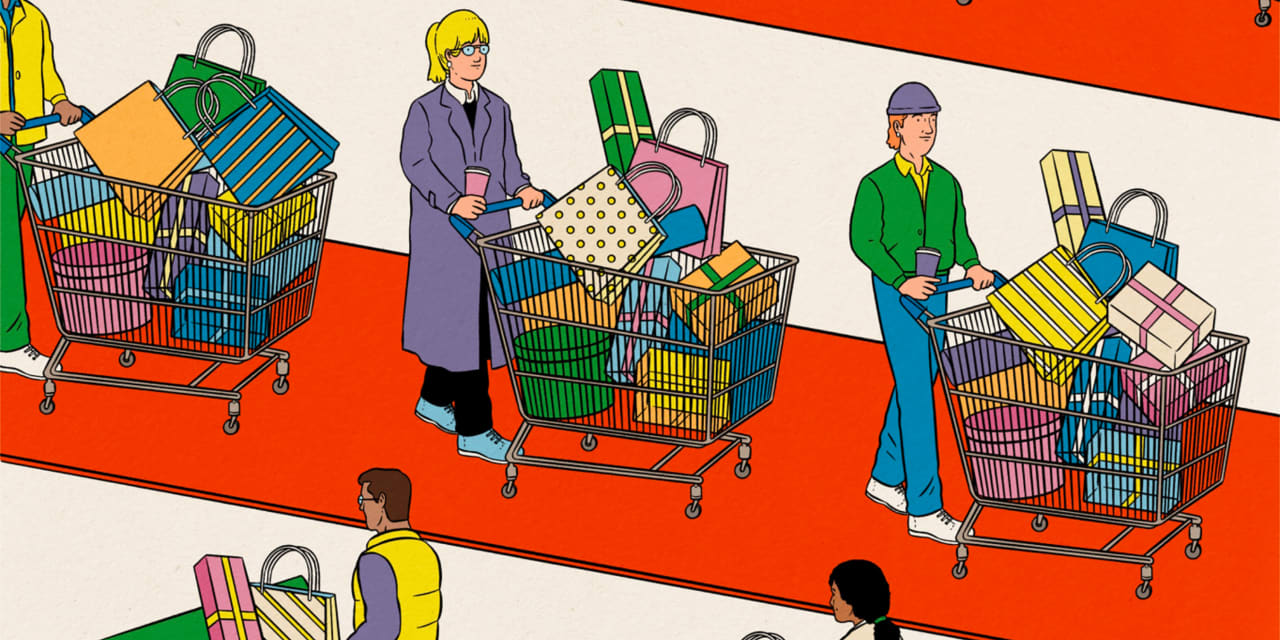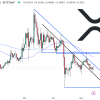The holidays are
Mattel’s
Super Bowl. The Barbies and Hot Wheels and American Girl dolls it sells in the fourth quarter, which is dominated by gift buying, typically makes up about a third of the company’s annual revenue. The toy maker devotes months to stocking inventories just so, mapping product releases to hit at the perfect moment, and coordinating with retailers to make sure its end-of-year strategy plays out without a hitch.
But even with all that, sometimes you get a 2022.
Last holiday season, after two years of pandemic-stoked, spiking demand, shoppers abruptly cut back. That left Mattel—and many of its fellow retailers—with warehouses full of unsold merchandise and decidedly unmerry annual results. “2022 was an aberration for the economy as a whole, not just for the toy industry,” says Mattel CEO Ynon Kreiz.
So, what does the CEO see for the coming holiday?
“It’s back to the traditional shopping pattern,” says Kreiz. “And we see it as a good thing.”
If you are sick of hearing about the “new normal,” we have good news: Welcome to the old normal. According to retail CEOs, industry analysts, and other insiders, the 2023 holiday is shaping up to look a lot like the pre-Covid years. Most forecasters are predicting that retail sales will increase between 3% and 5% this season compared with last year. That’s roughly in line with the average annual increase over the decade before the pandemic, according to estimates from the National Retail Federation.
A return to the old routine might make retailers’ planning easier. But it probably won’t please Wall Street, which quickly grew accustomed to the eye-popping growth of the pandemic-era holiday, which peaked at nearly 13%. Concerns that Americans have stopped splurging has dragged down retail stocks, with the
SPDR S&P Retail
exchange-traded fund (ticker: XRT) underperforming the broader market.
Looking at the state of the U.S. consumer, though, it isn’t surprising that many are making more-conservative shopping lists this holiday. Inflation, last year’s big spoiler, has cooled—but not vanished. (The consumer price index climbed at a 3.2% annual pace in October.) Higher interest rates, the resumption of student loan payments, and a generalized gloom about geopolitics and the economy aren’t exactly shopping-spree fodder.
Still, shoppers have spent 2023 defying pundits’ declarations that we’re mere moments from collapse. And, as Barron’s Megan Leonhardt explains, there’s plenty of solid evidence, starting with the muscular labor market, that this trend will continue through the holidays—and probably beyond.
“Anybody who has been betting on the consumer losing momentum in this cycle has had all kinds of things that they could point to, to justify it,” says Tim Quinlan, a senior economist at
Wells Fargo.
“But it’s just not a winning bet.”
For retailers, that means there are still holiday dollars to be captured—but the bounty is unlikely to be spread around the way it has been for the past few years. Competition for shoppers will be stiffer, and some sectors are better positioned to excel. Overall, Mari Shor, an analyst at Columbia Threadneedle Investments, describes this season as a “nail-biter” for retailers, as they prepare to battle for their share of the gifting pie.
And for investors, while we can’t promise that you’ll love the modest, 2019-style sales growth experts are expecting, we can offer you some ideas about which companies might be best poised to meet the moment—and help get you through the season, manicure unscathed.
When it comes to picking winners and losers this holiday season, analysts point to two critical factors: how efficiently a retailer has responded to the changing conditions, and which consumer segments it serves.
Last year showcased the perils of misreading demand, especially when it comes to overstocking. “There’s nothing more challenging than having too much inventory,” says Jane Nielsen, CFO of Ralph Lauren. Retailers with a backlog have no choice but to discount, discount, discount, destroying margins.
Interpreting the current state of inventories is tricky. While the overall inventory-to-sales ratio is lower than it was prepandemic, it’s still at its highest point since May 2020, according to Census Bureau data. But drill down to what the Bureau calls “general merchandise”—which includes most big-box retailers—and that same ratio is trending lower than it was this time last year, according to a study from the Federal Reserve Bank of Richmond. You can also see the correction at individual companies such as
Target
(TGT), which reported an inventory drop of 14% in the latest quarter compared with the same quarter in 2022.
The retailers that have best predicted how many of their particular widgets shoppers are willing to buy will be in the driver’s seat—though even they will be doing plenty of markdowns as they duel with competitors for a greater share of shopper dollars. (Deal watchers: analysts are predicting the usual Black Friday discounts, which start earlier every year—plus more late-season deals than we’ve seen in recent holidays.)
When it comes to clientele, this is a good year to appeal to wealthier Americans, who accounted for close to half of total spending from 2020 to 2022, according to
Morgan Stanley.
High earners are coasting on the strong stock market and elevated housing prices, and are less impacted by macroeconomic challenges than lower-earning households, say experts.
Michelle FauntLeRoy, for one, is feeling jolly heading into the holidays. FauntLeRoy works in business analytics, and says she’s had an “amazing” 2023. She got a tax refund for buying an electric vehicle, a bigger bonus than expected, and isn’t planning on skimping on gifts for her two young-adult daughters and husband. She estimates she will spend about $6,000 on Christmas gifts this year, and up to an additional $4,000 to throw an annual holiday party.
“My household is very economically stable—I know I’m very fortunate with that,” she says. “So I feel good about my ability to buy gifts.”
Investing in luxury players is one way to bet on higher-income shoppers. After starting the year strong, the sector has looked a little wobbly lately, as evidenced by a rare revenue shortfall from
LVMH Moët Hennessy Louis Vuitton
(LVMUY) in the most recent quarter. The
Tema Luxury
ETF (LUX) has shed 6.3% over the past three months.
But the real risk in the sector, say analysts, is to the so-called aspirational luxury companies like
Tapestry
(TPR),
Capri Holdings
(CPRI), and
Nordstrom
(JWN), which cater to a shopper who’s not quite in the income bracket for traditional luxury. “The aspirational consumer is under more pressure on a relative basis,” acknowledged Tapestry CEO Joanne Crevoiserat, on an earnings call with analysts.
Meanwhile, the sector pullback could provide the opportunity to snap up some truly luxurious stocks at outlet prices.
Hermès International
(RMS.France), LVMH, and
Ralph Lauren
(RL) are all trading at lower valuations than their five-year average, despite the fact that the companies have been executing well in a rocky environment.
Lower- and middle-income households are more likely to cut back this year, analysts say. They’ll also be more selective and prioritize value, says Oliver Chen, an analyst at TD Cowen. That means consumers will be hunting for deals, comparing prices, and searching for convenience.
One of Chen’s top stocks this season is
Walmart
(WMT). The company, which is a 2023 Barron’s stock pick, has done a “really great job” of consistently undercutting rivals on price while still delivering an easy and enjoyable shopping experience, he says. The stock nosedived after Walmart struck a cautious tone in its third-quarter earnings report, but many analysts, like Chen, still believe the company is well positioned heading into the holidays. In fact, the pullback may actually present an opportunity to nab the shares at a lower price. Other companies that win analyst kudos for capturing that thirst for value plus convenience include
Costco Wholesale
(COST),
Amazon.com
(AMZN), and
TJX Cos.
(TJX).
Of course, there are some shopping trends that cut across the income spectrum. Consumer electronics, for example, “is going to have a moment” as people start to trade in the products they bought during the pandemic for the latest models, says Stephanie Cegielski, vice president of research and public relations at the International Council of Shopping Centers. While much of the Street is still bearish on
Best Buy
(BBY), some—including
Goldman Sachs
—have started turning bullish in anticipation of that demand resurgence.
The toy industry, on the other hand, is coming down from recent highs and will see a modest slowdown this season, says Mattel CEO Kreiz. Still, he says Mattel expects to outpace the industry and boost revenue by double digits in the fourth quarter compared with a year ago. Some analysts agree, noting that the momentum from the Barbie movie could help Mattel pull ahead of competitor
Hasbro
(HAS) this year.
Apparel is another area anticipating an underwhelming holiday. In fact, many companies in the sector have taken a particularly cautious approach to ordering holiday inventory, says Kelly Pedersen, retail leader at PwC: “It’s hard to say whether that’s been self-fulfilling a little bit, but we are seeing now that there’s a softness in demand for apparel.”
Because shoppers are increasingly choosing one of two opposing paths—luxe or value—the apparel companies operating in the middle look to be in the worst spot. Morgan Stanley analyst Alex Straton believes
Levi Strauss
(LEVI),
Victoria’s Secret
(VSCO), and
PVH
(PVH), the parent of brands including Calvin Klein and Tommy Hilfiger, could prove to be holiday laggards this year. On the flip side, those with slightly higher-income customers, like
Abercrombie and Fitch
(ANF) and
Lululemon Athletica
(LULU), could still be hot gift-buying destinations.
Finally, a word of caution for anyone taking too much of a Grinch-eye view of this holiday. Consumers spent most of 2023 grumbling about the state of the economy while still spending away, and they could very well finish the year the same way. As Morning Consult analyst Claire Tassin points out, there’s a difference between what people think they should do and what they actually do—especially around the holidays. The season, she says, can’t help but give “a little bit of space, or permission, to spend and splurge.”
Write to Sabrina Escobar at [email protected]
Read the full article here










